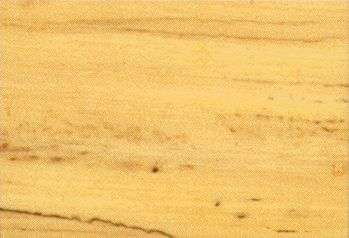
Casearia (Casearia battiscombei)
Family: Flacourtiaceae
Common names: Casearia, Chapchabayet, Chepcharaiyet, Cheptokoriet, Forest sword leaf, Gusieruss, Liss, Mlikawandu, Mrikawandu, Muirungi, Munogo, Namasinzi, Servondet, Servwa, Sigikwa, Sihuling, Sikisiget, White matua
Distributed in: Kenya, Tanzania, Uganda, Zimbabwe (Africa)
Common uses: Boxes and crates, Cabinetmaking, Furniture, Joinery, Plywood, Pulp/Paper products, Turnery
Environment profile: Vulnerable
Tree size: Trunk diameter is 150-200 cm
Colors: the heart isGreen/grey, Redand the sapwoodWhite to yellow, Yellow.The grain isStraight, the textureMedium
Natural durability: The sapwood is susceptible to wood staining fungal attack, Very durable
Odor: Has a taste
Kiln Schedules: Kiln Drying Rate (in days) is fairly rapid
Kiln Drying Rate: Fairly rapid (11-17 days for boards under 32 mm, to 31-51 days for boards greater than 63 mm)
Drying Defects: Slight twist/warp, Uneven Moisture Content
Ease of Drying: Slowly
Tree Identification: Bole/stem form is straight
Comments: General finishing qualities are rated as good
Blunting Effect: Little
Boring: Fairly easy to very easy
Cutting Resistance: Fairly Difficult to Very Difficult to saw
Gluing: Fairly Easy to Very Easy
Mortising: Finishes satisfactorily
Moulding: Satisfactory moulding
Movement in Service: Satisfactory moulding
Nailing: Pre-Boring Recommended, Very Good to Excellent
Planing: Planes well, to a good finish
Resistance to Impregnation: Sapwood is permeable
Response to hand tools: Easy to machine
Routing recessing: Fairly Easy to Very Easy
Sanding: Fairly Easy to Very Easy
Veneering qualities: Suitable for peeling, There is slight to moderate drying degrade and the potential for buckles and splits
Steam bending: Poor to Very Poor Results
Screwing: Fair to Good Results, Pre-boring recommended; Turning: Fairly Difficult to Very Difficult
- Numerical data Metric
- Numerical data English
- Strength properties
- References
 |
 |
 |
 |
| Item |
Green |
Dry |
Metric |
| Specific Gravity |
|
|
|
| Density |
|
576 |
kg/m3 |
| Bending Strength |
404 |
632 |
kg/cm2 |
| Crushing Strength |
194 |
333 |
kg/cm2 |
| Hardness |
|
407 |
kg |
| Impact Strength |
|
|
cm |
| Shearing Strength |
|
100 |
kg/cm2 |
| Stiffness |
85 |
99 |
1000 kg/cm2 |
| Tangential Shrinkage |
|
|
% |
| Radial Shrinkage |
2 |
|
% |
| Weight |
560 |
448 |
kg/m3 |
| Maximum Load |
0,35 |
0,49 |
cm-kg/cm3 |
| Toughness |
|
|
cm-kg |
| Static Bending |
|
|
kg/cm2 |
|
 |  |  |  | | Item | Green | Dry | English | | Bending Strength | 5752 | 8992 | psi | | Density | | 36 | lbs/ft3 | | Hardness | | 898 | lbs | | Maximum Crushing Strength | 2762 | 4743 | psi | | Shearing Strength | | 1425 | psi | | Stiffness | 1222 | 1420 | 1000 psi | | Work to Maximum Load | 5 | 7 | inch-lbs/in3 | | Weight | 35 | 28 | lbs/ft3 | | Radial Shrinkage | 2 | | % | | Tangential Shrinkage | 7 | | % | |
Density (dry weight) = 38-45 lbs/cu. ft. 0
Density (dry weight) = 31-37 lbs/cu. ft. 0
Bending strength (MOR) = low 0
Shrinkage, Radial = very small
Max. crushing strength = low
Hardness (side grain) = soft
Max. crushing strength = medium
Shrinkage, Tangential = moderate
Shearing strength (parallel to grain) = low
Modulus of Elasticity (stiffness) = low
Shrinkage, Tangential = very small
Shrinkage, Tangential = small
Shrinkage, Tangential = fairly large
Shrinkage, Radial = small
Modulus of Elasticity (stiffness) = very low
Work to Maximum Load = very low
Shrinkage, Radial = moderate
Shearing strength (parallel to grain) = very low
Max. crushing strength (stiffness) = very low
Hardness (side grain) = very hard
Bending strength (MOR) = very low
Bois, P.J.,1966,The Strength Properties of Tanzania Timbers,Tanzania Forest Div. Util. Sec. Moshi Tech. Note, No.35Bolza, E., Keating, W.G.,1972,African Timbers - the Properties, Uses and Characteristics of 700 Species,C.S.I.R.O. Div. of Building ResearchBryce, J. and Kitambi, G.,1960,The Air-drying Properties of some Tanganyika Timbers Technical Note No 23,Tanganyika Forest Department Utilisation Division Technical NoteBryce, J.M., Norcross, H.,1961,The Resistance of Tanganyika Timbers to Impregnation,Tanzania Forest Dept. Util. Sec .Tech. Note,No.28Chudnoff, M.,1984,Tropical Timbers of the World,U.S.A. Department of Agriculture, Forest Service, Forest Products,Laboratory, Madison.Dale, I.R., Greenway, P.J.,1961,Kenya Trees and Shrubs,Buchanans Kenya Estates Ltd. Nairobi Hatchards LondonFrance - C.T.F.T./C.T.B.,1982,Guide pour le Choix des Essences Deroulables-pour la fabrication du,contreplaque,C.T.F.T./C.T.B. FranceKenya Forest Department,1941,Strengths of Kenya timbers,Kenya Forest Department Bulletin No. 36Murira, K.,1984,Natural Durability Tests of Tanzanian Timbers 1955 - 1982,Tanzania Forestry Research Institute, Timber Utilisation Research Centre,,Moshi.Palgrave, K.C.,1977,Trees of Southern Africa,Cape Town South AfricaPatterson, D.N.,1963,The strength of Kenya timbers, their derivation and application,Kenya Forestry Department Research Bulletin,No.23Takahashi, A.,1978,Compilation of Data on the Mechanical Properties of Foreign Woods (Part,III) Africa,Shimane University, Japan, Research Report on Foreign Wood No. 7Tanzania Forest Department,1960,The Natural Durability of Local Timbers,Tanzanian Forest Dept. Tech. Note,No.14Tanzania Forest Division,1966,Kiln Drying Schedules for Tanzania Timbers Technical Note no.38,Tanzania Forest Div. Util. Sec. MoshiTanzania Forest Division,1967,The Weights and Shrinkage of some Local Timbers,Tanzania Forest Div. Util. Sect. Technical Note,No.25Tanzania Forestry Department,1961,Timbers of Tanganyika - Casearia battiscombei (mlikawandu,Tanzania Forestry Department, Utilisation Section, Moshi - Timbers of,TanganyikaWimbush, S.H.,1950,Catalogue of Kenya Timbers,Govt. Printer Nairobi Kenya
|








